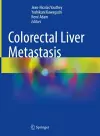
Colorectal Liver Metastasis
3 contributors - Hardback
£199.99
Dr. Jean-Nicolas Vauthey is Chief of the Hepato-Pancreato-Biliary Section in the Department of Surgical Oncology at The University of Texas MD Anderson Cancer Center and the Dallas Fort Worth Living Legend in Clinical Cancer Research Chair in Houston, USA. Dr. Vauthey co-authored more than 600 publications in peer-reviewed journals (h-index, 107) and more than 100 reviews and book chapters in major textbooks. Dr. Vauthey’s clinical research focuses on methods to measure and to improve outcome after hepatic resection for hepatobiliary malignancies. Dr. Vauthey proposed a standardized method for calculating the volume of the anticipated liver remnant prior to liver surgery. Dr. Vauthey has evaluated the use of preoperative chemotherapy in the multidisciplinary treatment of patients with hepatic colorectal metastases. He has pioneered the use of 2-stage hepatectomy for patients with advanced metastatic colorectal carcinoma to liver. Dr. Vauthey’s most recent work has focused on somatic mutations, circulating tumor DNA and their role in defining response, treatment, surveillance and prognosis after resection of colorectal liver metastases.
Dr. Yoshikuni Kawaguchi is Deputy Chief (Inpatient Care) of Hepato-Biliary-Pancreatic Surgery Division in the Department of Surgery at The University of Tokyo. Dr. Kawaguchi co-authored more than 130 publications in peer-reviewed journals (h-index, 25). Dr. Kawaguchi’s interest in clinical research is to improve short- and long-term outcomes of patients undergoing surgery for hepato-biliary-pancreatic diseases. Dr. Kawaguchi proposed a novel 3-level classification system for open and minimally-invasive liver resection, which is associated with liver resection complexity and postoperative complications. Dr. Kawaguchi has recently worked with Dr. Vauthey to improve the understanding of multiple somatic mutations of colorectal liver metastases for clinical practices including accurate prognostication after resection and recurrence risk-adjusted surveillance algorithm.